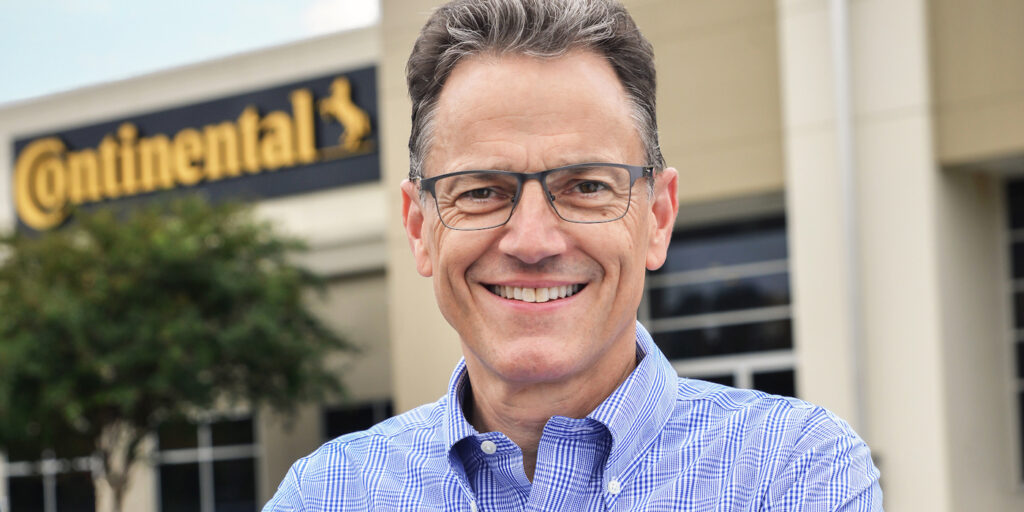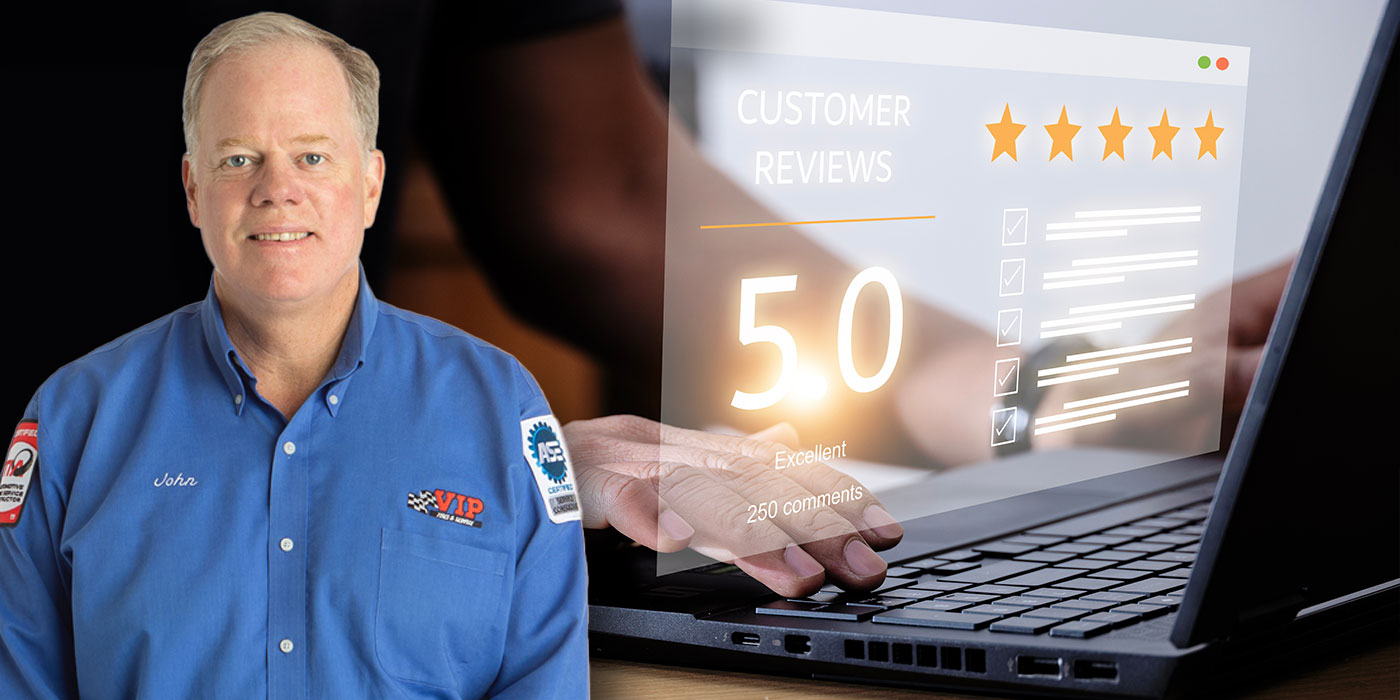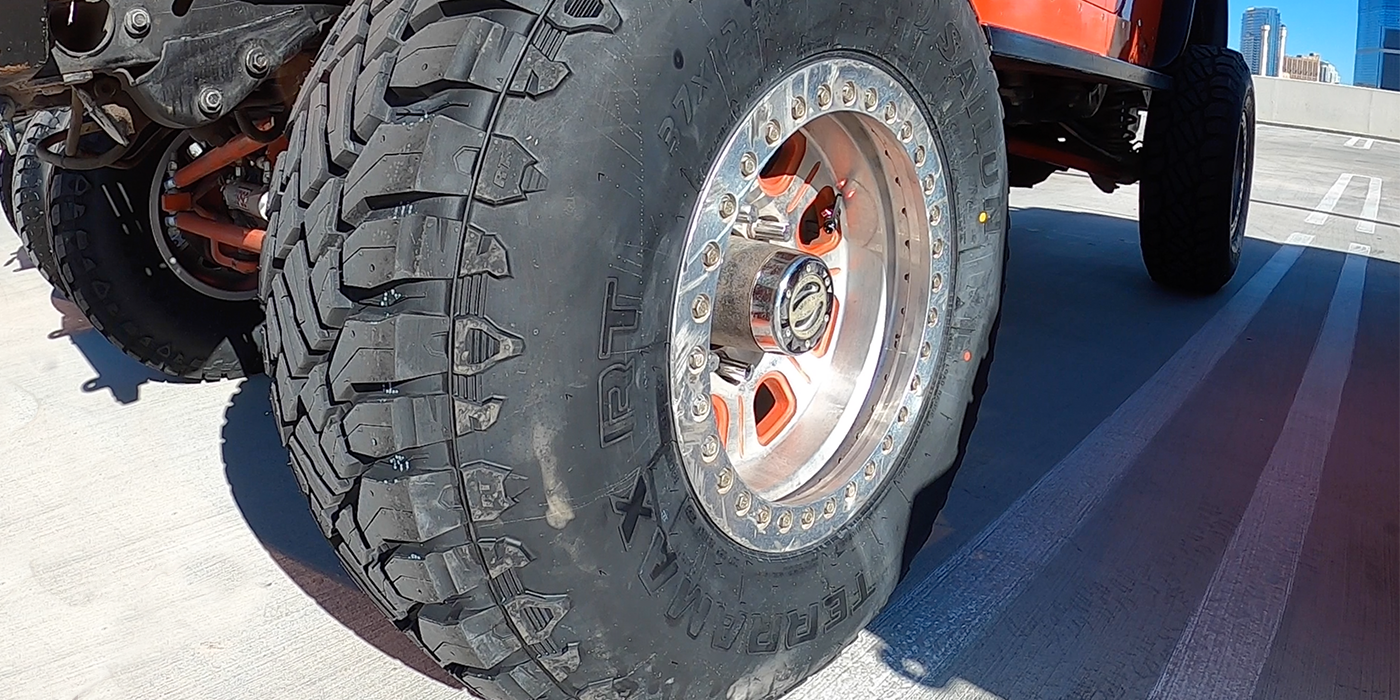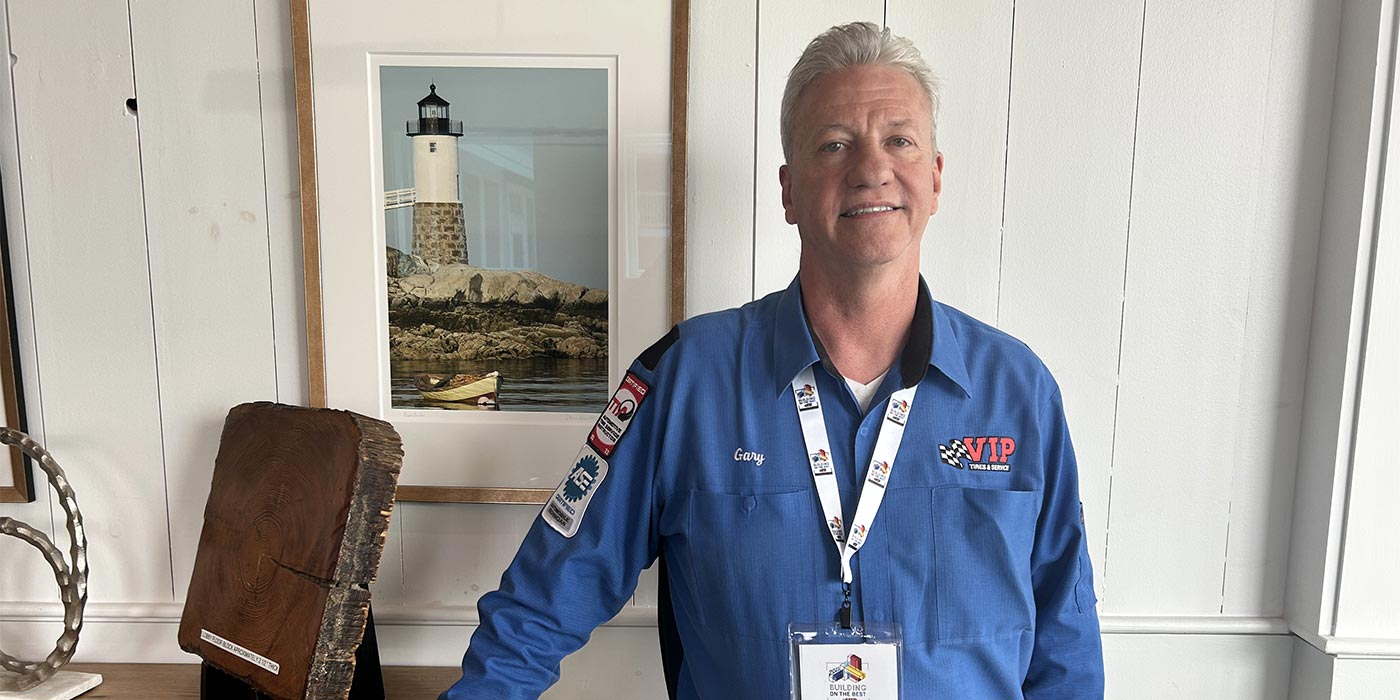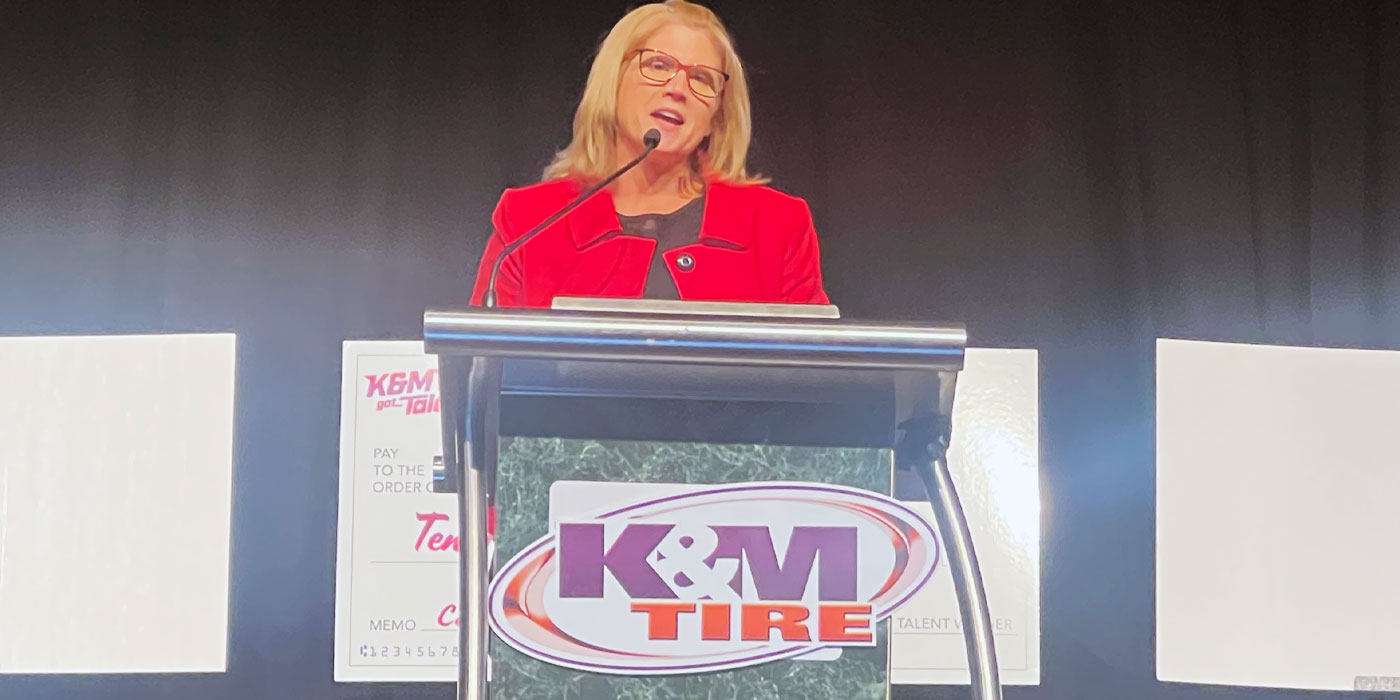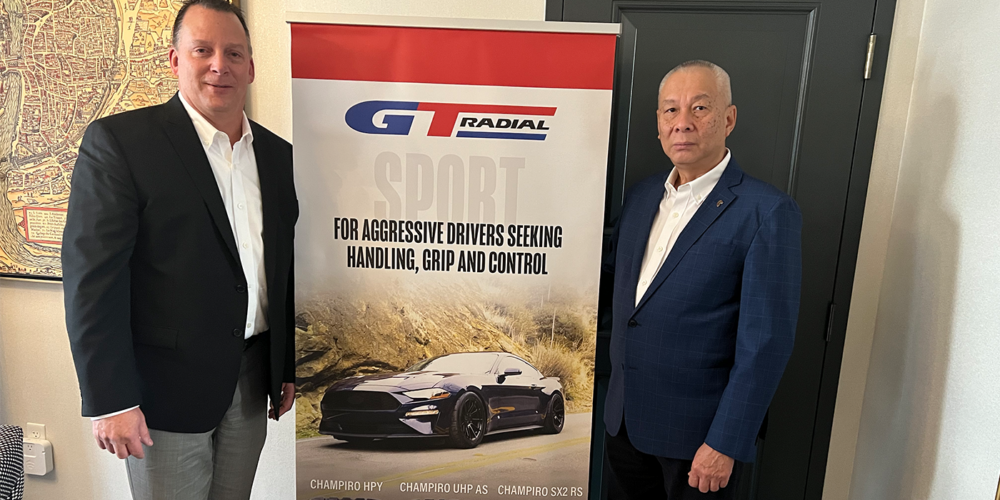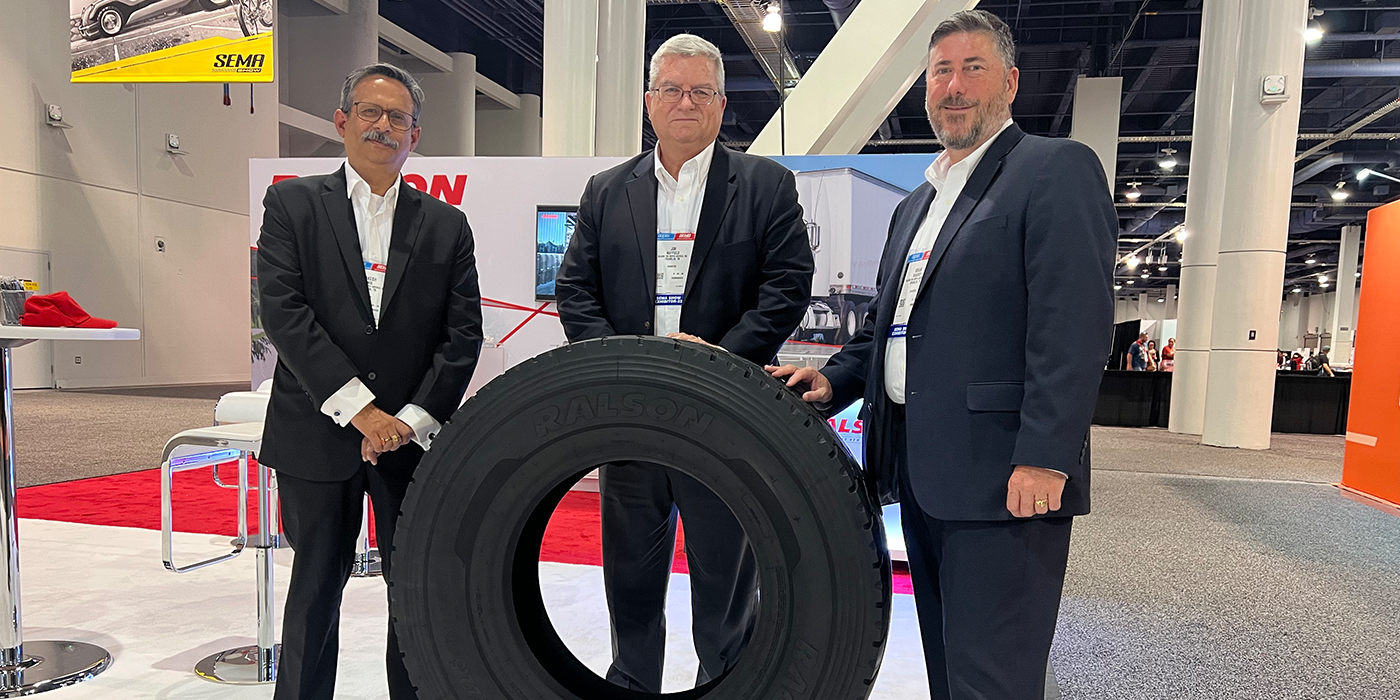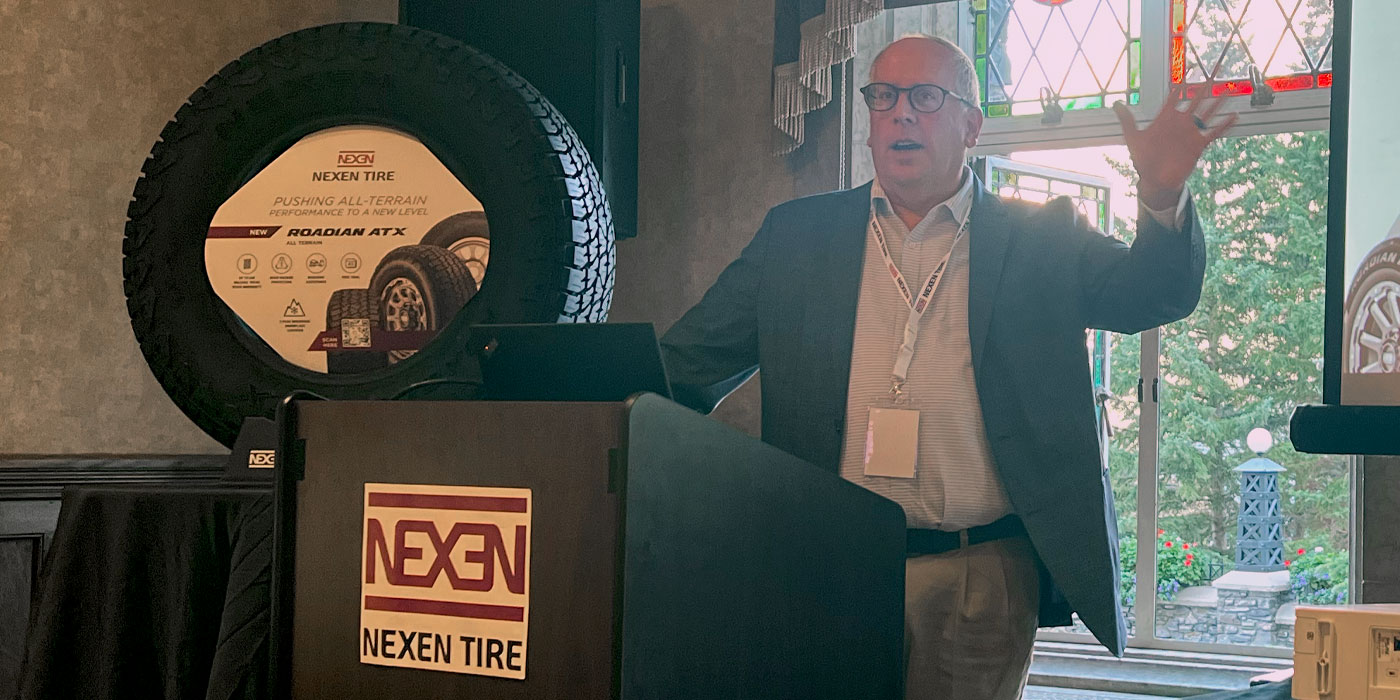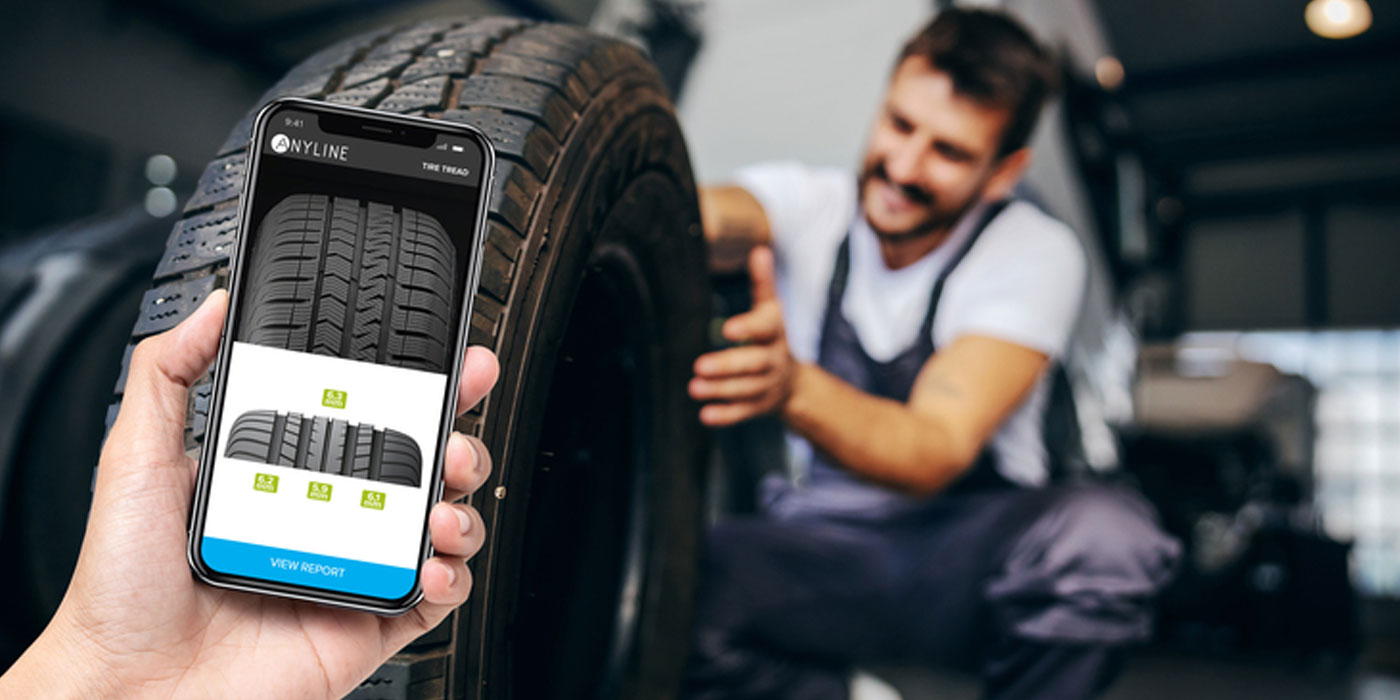Continental Tire is doubling down on what’s kept the company rolling for 150 years: its customers.
In the last several months, Continental’s tire business solidified this customer-centric plan in its Vision 2030, a look at what the next 10 years holds for the company. In that, the tiremaker has set its sights on becoming the leader in digital tire solutions by 2030, with its dealer customers at the core of its innovation. In January, the company demonstrated this by launching the Continental ExtremeContact DWS06 Plus, in a broad size range to serve its dealers.
“For the business area globally to explicitly say the customer is in the center of everything, that was a big statement,” says Jochen Etzel, CEO of Continental Tire the Americas, in describing Continental’s Vision 2030 plan. “The implications are really exciting, and we’ll see more of that in the future.”
As a 30-year Continental veteran, Etzel has been responsible for expanding Continental’s tire business across the globe. With the Americas business unit, he and his teams will play an integral role in carrying out the company’s vision for the next 10 years, advocating for dealers as the center of digital tire solutions development.
Tire Review caught up with Etzel last month to learn more about the company’s digital-centric plans, as well as opportunities the company sees in serving the North American car parc and dealers.
Tire Review: First, we’d like to congratulate you and your team on the launch of the Continental ExtremeContact DWS06 Plus, the company’s new UHP all-season tire. How does the DWS06 Plus enhance Continental’s existing UHP product portfolio? What has been Continental’s product strategy in its tire segments to ensure it is providing dealers with up-to-date products to fit consumers’ needs?
Etzel: We’re really excited as you can imagine about the launch of the ExtremeContact DWS06 Plus. Its predecessor [the ExtremeContact DWS06] is already the leading product in the UHP market. In fact, some customers are still telling us that Continental actually defined the segment with the first DWS generation. So, for good reason, we cover more than 96% of the segment with the DWS06 Plus. I think this is more coverage than any competitor currently offers and a key contributor to the continued success of this line.
For us, offering all significant fitments in a small amount of core products is really our commitment to customers. This allows them to fulfill their consumers’ needs with the smallest possible complexity, and it creates go-to products, like the ExtremeContact DWS06 has become in the market. With increasing size complexity in the market, it is our commitment to our customers to ensure that we have appropriate offerings for what a consumer would want to buy. For example, there was fairly small coverage for some Tesla sizes in this segment previously. But now, with the addition of the DWS06 Plus, there are expanded offerings to fit more sizes.

TR: Continental launched its Vision 2030 Plan for its tire business unit last year. The plan says the company is aiming to become the global leader for service-based digital solutions by 2030. On the commercial side, Continental has developed many digital tire monitoring technologies. Explain why the company feels smart digital solutions are the way of the future. How will they benefit the consumer and the dealer?
Etzel: When we developed Vision 2030, we wanted to make clear that we’re focusing on putting our customers explicitly at the center of everything we do. That was the starting point for us. This focus on customer centricity is why we aim to become a global leader for tire solutions, because we understand how this will benefit the customer in the end. We believe smart digital solutions are the way of the future in this context.
In fact, this year we are celebrating an important milestone for the company—our 150th anniversary. Our technology expertise combined with our heritage allows us to think beyond tires, beyond today and about what’s next. For us, that is smart digital solutions.
As one of the world’s largest suppliers of electronics, systems and software in the mobility space, we believe we have a decisive competitive edge in this respect. This is why we’re committed to continue to systematically develop new business models and create an entire ecosystem of smart digital solutions that all center around our premium tires. We also continue to develop partnerships with customers and with other technology firms. With this approach, our goal is to become the global leader for service-based digital solutions by 2030.
We have smart tires that pair with ContiConnect that permit fleet customers to monitor their tire condition in real-time with the aid of sensors and software. We’re running a pilot project with a car-sharing provider on a fleet of 600 vehicles in Denmark. Through this, we have demonstrated real-time tire tread monitoring with electric vehicles and can predict tread depth to a millimeter accuracy.
We’re demonstrating the added value that it will create for our customers going forward when we network tires, sensors, telematics, data algorithms and the cloud. I’m convinced the result will be smart digital solutions that will help us ensure that, in the future, tires are serviced or replaced precisely when necessary. So, clearly this will lead to a substantial increase in safety and productivity, but at the same time, it will help cut costs, directly benefiting our customers and the consumer.
TR: Including smart digital solutions, what do you feel is one of the biggest challenges or opportunities for Continental in providing tires for the North American market that fit the evolving North American car parc?
Etzel: Well, we are obviously constantly innovating and providing new technology for dealers, for fleets and for end users and consumers. As I mentioned, we are already active in digital tire monitoring for commercial vehicles in North America and South America. We’re now starting to explore options for passenger vehicles. We anticipate that car sharing will come back and, as it does, digital solutions will be increasingly important for both rental and car-sharing fleets.
We’re also exploring ways to help dealers through digitalization. We’ve started to explore RFID technology, for example, which would allow dealers to see at a glance which tires they have in inventory.
TR: On the commercial side, Continental has launched new tires in the growing 19.5-in. segment to serve last-mile delivery vehicles. How does the company plan to continue to capture growth in the last-mile delivery segment? How will the company’s new commercial truck tire plant in Mississippi play a role?
Etzel: We are active in the last-mile delivery segment with tires such as the Conti Hybrid HD3, a 19.5-in. tire designed for Class 4 box trucks, and the Conti LAR 3, a 16-in. tire for delivery vans designed for maximum retreadability. Changing to a retreadable tire in a 16-in. size can help fleets achieve their lowest overall driving cost versus using a tire that cannot be retreaded.
This year, we will release an additional size of the 16-in. steel-belted LAR, which will offer more options for fleets in the last-mile delivery segment. We have a strong partnership with some of the largest carriers in the last-mile delivery segment, as well as OE manufacturers serving the segment, which also helps us anticipate and react to the trends.
Our new commercial truck tire plant in Clinton, Mississippi, really gives us more flexibility to react to the needs of the North American market. It is integrated into our global sourcing footprint, which also includes Mount Vernon, Illinois, which happens to be Continental’s largest truck tire plant in the world nowadays. Adding the plant in Mississippi gives us a significant advantage by increasing capacity in the North American market. Clinton continues our strategy of sourcing “in the market, for the market” as much as possible.
TR: With different freight and trade issues going on right now, your strategy of “in the market and for the market” is something we’ve been hearing from more manufacturers.
Etzel: Yes, we’ve seen a lot [in trade] in the last year—in the last couple of years, really. I think the vulnerability of the global supply chain is definitely a learning experience for all of us. Clearly for us, it reconfirms the strategy that we’ve taken with our plants in Sumter (South Carolina) and Clinton. We really want to produce in the market, for the market, wherever we can.

TR: You explained how Continental tires are working with sensors, telematics and algorithms in the cloud to provide a better tire and service experience for dealers and the consumer. But what about today’s tire market? Where does Continental see the replacement PLT tire market going this year, especially after last year when the pandemic hit?
Etzel: From what we can see in the short term, we will continue to see growth in the ultra-high-performance segment and electric car segment, while growth in the passenger car segment seems to be slowing, quite frankly. We’ve also seen really good growth and expansion in the CUV and SUV segments. They mimic the direction that the OEMs are taking. For instance, I remember the announcement from companies like Ford that they’ll be largely phasing out passenger cars in the future to move to SUVs, CUVs, vans and light truck vehicles. I think in the short term, that’s the trend that we’re definitely seeing here in North America.
For the time being, we really don’t see a big shift in how people will be buying tires, at least in the near future. We continue to be focused on supporting our current channels of distribution with the high level of service that Continental has always offered. As the market shifts and new ways of support are needed, we will continue to adapt and ensure that we deliver for our customers like we’ve always done.
TR: Speaking of adapting, can you describe how Continental has adapted as a result of the coronavirus pandemic?
Etzel: Yeah, it was a rough ride for all of us. When the pandemic reached us here in the Americas region, we made the decision early on to temporarily stop production at our plants to equip them to function in a pandemic. We were not prepared at the time. In hindsight, it was the right thing to do as the health and safety of our people is the most important. However, like many, we’re still recovering from the time when we had no production in 2020. Fortunately, sales remain relatively robust. Because of our global footprint, we’re able to source the same tire from multiple plants to fulfill the needs of our consumers. The understanding from our customers as we catch up from the shutdowns has really been appreciated, and we look forward to providing excellent service to our customers for the next 150 years.

